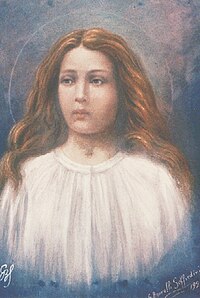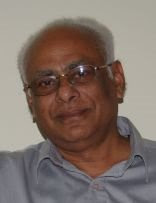Here is an article by
Pope
Francis delivered an impassioned sermon on Monday, during which he quoted a
passage from the bible that said some sinners deserve to be tied to a rock and
cast into the sea.
[First in queue is K.M. Mani; next Ooman Chandi followed by a
number of Kerala Archbishops, Bishops, many priests, few nuns and most
politicians.]
The Argentinian religious leader said Christians who donated money to the church but stole from the state were leading a "double life" and were sinners who should be punished.
The Argentinian religious leader said Christians who donated money to the church but stole from the state were leading a "double life" and were sinners who should be punished.
[Pope is referring to the people in the above list.]
Quoting from the Gospel of St Luke in the New Testament, he said: "Jesus says 'It would be better for him if a millstone were put around his neck and he be thrown into the sea'," because "where there is deceit, the Spirit of God cannot be".
Quoting from the Gospel of St Luke in the New Testament, he said: "Jesus says 'It would be better for him if a millstone were put around his neck and he be thrown into the sea'," because "where there is deceit, the Spirit of God cannot be".
In most Bishop’s Houses and presbyteries ‘the spirit of God’
cannot be.]
Without directly mentioning corruption within the Catholic Church, in his sermon he described those involved in corrupt practices as "whitewashed tombs", explaining that "they appear beautiful from the outside, but inside they are full of dead bones and putrefaction." He said, "A life based on corruption is varnished putrefaction."
Without directly mentioning corruption within the Catholic Church, in his sermon he described those involved in corrupt practices as "whitewashed tombs", explaining that "they appear beautiful from the outside, but inside they are full of dead bones and putrefaction." He said, "A life based on corruption is varnished putrefaction."
[Red/purple sashes or long cassocks or white starched khadi shirts
and dhotis cannot camouflage the putrefaction within.]
On Friday, he also condemned corruption, asserting parents who earned through bribes or corrupt practices had "lost their dignity", and fed their children "unclean bread".
On Friday, he also condemned corruption, asserting parents who earned through bribes or corrupt practices had "lost their dignity", and fed their children "unclean bread".
[Jose K Mani and his sisters and their children must be eating
‘unclean bread.’]
He said: "Some of you might say: 'But this man only did what everyone does!'. But no, not everyone! Some company administrators, some public administrators, some government administrators... perhaps there are not even very many. But it's that attitude of the shortcut, of the most comfortable way to earn a living.
"These poor people who have lost their dignity in the habit of bribes take with them not the money they have earned, but only their lack of dignity!"
He compared receiving bribes as "like a drug" as people become "dependent" on the habit of bribes.
The Pope has made clear his intentions to tackle corruption within the Vatican and held a meeting with the Church's highest ranking whistle blower in October, after telling the Church in May that it "must go forward... with a heart of poverty, not a heart of investment or of a businessman" reminding it that "St Peter did not have a bank account".
He said: "Some of you might say: 'But this man only did what everyone does!'. But no, not everyone! Some company administrators, some public administrators, some government administrators... perhaps there are not even very many. But it's that attitude of the shortcut, of the most comfortable way to earn a living.
"These poor people who have lost their dignity in the habit of bribes take with them not the money they have earned, but only their lack of dignity!"
He compared receiving bribes as "like a drug" as people become "dependent" on the habit of bribes.
The Pope has made clear his intentions to tackle corruption within the Vatican and held a meeting with the Church's highest ranking whistle blower in October, after telling the Church in May that it "must go forward... with a heart of poverty, not a heart of investment or of a businessman" reminding it that "St Peter did not have a bank account".
[How many of Kerala’s Catholic Cardinals and Bishops have read
this last paragraph? I have a strong suspicion that they all must be praying
for the early demise of this sincere and holy man to continue with their empire
building.]

